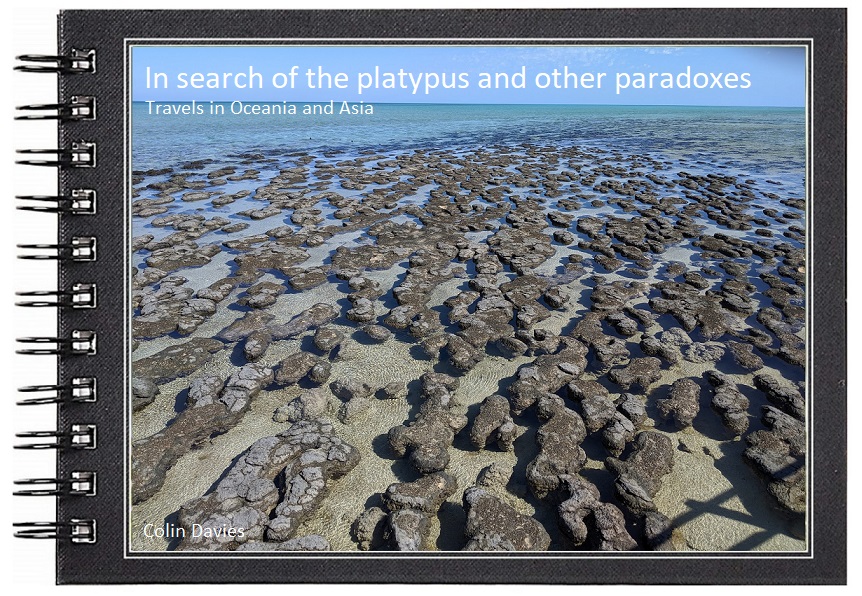 |
| Takahe |
 |
| Kaka |
The irony is, when you enter the country they have sniffer dogs checking you over for mud or soil on your shoes or food in your luggage so that you don't spread alien species or diseases into New Zealand, yet it's already too late, the biggest alien of all has already decimated the country and continues to do so. Humans have farmed or developed the land, introduced livestock chopped down the trees, cleared the scrub, polluted the atmosphere and introduced alien predators such as cats, dogs, stoats, possums, rodents, a whole host of non-native birds, plants and even wasps, making most of the country virtually uninhabitable for the native species, so much so that most of it can only exist in places like Tiritiri. Still, at least there was no soil on my shoes at the airport so that must count for something .....
 |
| Brown Quail |
Even Tiritiri isn't completely immune, there are tons of non-native birds on the island, blackbirds, starlings, skylarks and brown quail, and even more non-native flora reaches the island on the wind. On nearby Little Barrier Island they employ people to remove alien weeds from the cliffs, but the plants just keep returning.
 |
| North Island Saddleback |
 |
| Red-crowned Parrot |
 |
| Kaka |
However, in my five days in New Zealand I did have an enjoyable time, I went on a superb "pelagic" and saw New Zealand storm petrel in the Hauraki Gulf (not really a pelagic, it barely left the bay), the iconic wrybill at Miranda, the gannet colony at Muriwai and on Tiritiri many of the New Zealand passerines and more importantly (for me) kaka, takahe and little spotted kiwi. Kaka is a large parrot of which there is currently only one on the island but it did at least reach here under its own steam because it flew from the mainland. Takahe and little spotted kiwi on the otherhand are both flightless and were introduced into this safe haven, a move which probably saved both species from extinction.
Aparently at one time little spotted kiwi was down to six individuals while takahe was actually considered extinct. They were both major target species for me and I was delighted to see them. The kiwi are nocturnal, but a walk around suitable habitat at night with a red light torch produced the goods, with two birds seen well at close range. A fantastic experience.
 |
| Bellbird |
 |
| Brown Teal |
Kelp Gull
North Island Robin
New Zealand Dotterel
 |
| New Zealand Pigeon |
 |
| Pied Cormorant |
Variable Oystercatchers. The black form looks very like the Australian sooty Oystercatcher whereas the pale form looks like pied oystercatcher. Everything in between looks like a hybrid but apparently it is a separate species.
 |
| Tui |
 |
| Pukeko |
 |
| Takahe |
I love these Takahe, and Tiritiri is virtually the only place you have any chance of seeing them in the "wild". However if they get sick they get taken to the vets and these chicks will probably get moved elsewhere because if they don't then the population levels on Tiritiri get too high and they attack and injure each other. Takahe are on permanent life support and the prognosis is bad. Without the extinction of humans and their domestic animals, it's hard to see a bright future for the Takahe.
Similarly, though seeing kiwi on Tiritiri was a surreal and magical experience, many birds on Tiritiri wear bright shiny rings and in the torchlight they glowed in the dark like cats eyes. It's virtually impossible to see little spotted kiwi anywhere else, it's about the rarest of the kiwi. It was a fantastic experience seeing them, and it felt wild at the time so I've no complaints, but those rings were just awful and were a reminder of how dependent these birds are on humans for their survival.
The majority of these trees have been planted. Back in the 1960s Tiritiri was mostly farmland and the native trees and scrub had been cleared.
It truly is a conservation masterclass and a great place to visit, but it's also a permanent reminder of how badly wrong the world outside has gone. It makes me sad.
The bunkhouse

























No comments:
Post a Comment